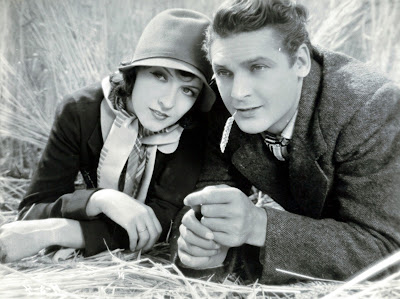The Watch List For 11/28/12
BULLDOG DRUMMOND STRIKES BACK (1934) --- Freewheeling gentleman sleuth Ronald Colman in the second of what I wish had been a longer series that unfortunately ended here, at least insofar as Colman's participation. 30's mystery goes down easiest on light setting. The best of them are all about personalities, or should be. Footloose RC relies on his charm, of which there's plenty. Strikes Back reminded me of The Devil To Pay of a few years earlier, being undistilled Colman as most prefer him. No lost love or march to the guillotine here. Bulldog's mystery is not one the cast takes seriously, its solution apparent from about mid-way, getting there and beyond being multiple levels of fun.
Villainy is supplied by Warner Oland. I read how he showed up often not knowing the day's dialogue. Maybe actors now should follow that example given results WO got with it.
MEN IN WAR (1957) --- The grim business of getting to, then taking, a Korean objective one foot and casualty at a time. Men In War was said to have cost indie filmmakers (for UA release) less than a million, dirt roads and Bronson cavern subbing for Asian peninsulas. For its simplicity and avoidance of combat formula, this may be a purest of manhood rituals director Anthony Mann addressed over a decades-long career. I'd guess he had more freedom here than with big studio westerns done around a same period. Men In War's writer (Ben Maddow) went on blacklists and so was not credited. Players I like do strong work: Robert Ryan (in for a % of the pic), Aldo Ray, Robert Keith (one word of dialogue as a shell-shocked officer, and great), James Edwards, Vic Morrow ... there's also Tony Ray, director Nick's son of le affaire Gloria Grahame fame. Men In War padded someone's purse, with $1.3 million in domestic rentals, another $1.3 foreign --- this was one independent venture that paid off.
FIVE MILLION YEARS TO EARTH (1967; US released in 1968) --- Hammer films, at least around me, had stopped drawing crowds by 5-11-68 when I saw this with The Viking Queen, Brick Davis and myself feeling quite alone at the Liberty. Distributing 20th Fox was little more engaged, their pressbook for Five Million Years To Earth less substantial than a cocktail napkin. The fact it's among best of that era Hammers mattered little for eroded enthusiasm for their brand (Five Million got a paltry $306K in domestic rentals). Co-feature The Viking Queen was maybe more to liking of whatever other fourteen-year-old boys were that day in
ANDY HARDY'S BLONDE TROUBLE (1944) --- Andy headed off to college really amounts to splitting up the family, so there is back-and-forth between him on campus and fairly tepid happenings back in Carvel (making us realize how much the Hardys needed Andy). Surprisingly long for a Hardy, Blonde Trouble puts both Andy and his audience in unfamiliar surroundings. What helps is novelty of the Wilde twins and suddenly grown up, even though she plays a freshman co-ed, Bonita Granville (one thing startling about teens in 40's pix is their stylish and mature dress --- I could happily go for any of Andy's suits). Dr. Keye Luke drops over from Blair General to treat Judge Hardy for tonsillitis, a neat melding of two entrenched MGM series.
The Hardy franchise was here at a turning point. How could they continue with Andy away four years to college? And what of his service obligation, with a country now at war? (scenes addressing this issue were shot, then jettisoned) Andy and Carvel would never be the same after Blonde Trouble. One more in 1946, Love Laughs At Andy Hardy, couldn't revive the brand after two-year break of momentum (and Rooney's own service hitch). Worse would be Andy Hardy Comes Home, which he shouldn't have, in 1958. A most surprising aspect of Blonde Trouble is college dean Herbert Marshall, who flirts with possibility of romance with student Bonita Granville, a concept far more daring now than it would have been in 1944. Seen on TCM, though Blonde Trouble is bound to show up with Warner Archive's next Andy Hardy wave.
PARACHUTE BATTALION (1941) --- This was sold by RKO to 1941 exhibitors in the same block with Citizen Kane, but unlike Kane, came back with a profit. Parachute was exactly what audiences wanted as the country drifted closer to war. True, it doesn't amount to much, but soldiers in training were focal points of interest for families facing membership thinned by a peacetime, and soon to be wartime, draft. The story is mere backdrop to training footage, with boys making first jumps out of aircraft. War isn't mentioned, but it is clear that is where they are headed. Edmond O'Brien looks younger than he would again, a handsome boy to later become an agitated character man, and Robert Preston is recognizable mainly by his voice. Welcome Harry Carey plays a grizzled sergeant. Viewers who'd known his westerns since childhood must have been reassured to know HC stood still ready to serve. There's no combat here, just camp conflicts, more of them romantic than military-related. A fairly rough print seen on TCM.



























































